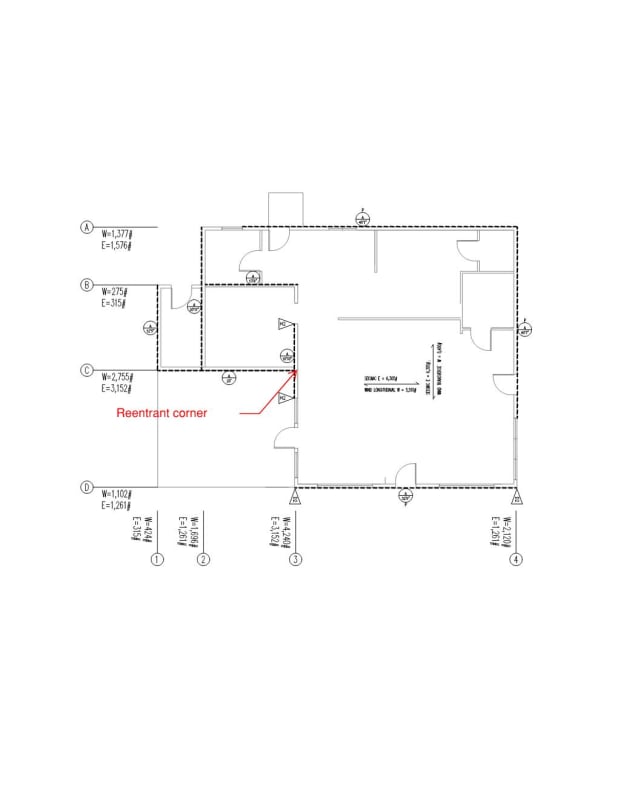GVCivilGuy
Civil/Environmental
I have a single story residential project in CA, seismic design cat D. All of the municipalities have farmed out plan review to 3rd party agencies that throw the book at the plans during a review.
My current review is asking me to "At the horizontal diaphragm offset provide continuity ties in both orthogonal directions per ASCE 7-16 section 12.1.3 and 12.10.1." My response was Tributary roof areas adjacent to shear walls resist the horizontal diaphragm forces. There is no need for strapping as the roof sheeting provides continuity. Her response to me was: "PC2: Thank you for providing a response. However, continuity ties at the diaphragm’s reentrant corners with diaphragm straps are required. Please include per resubmittal." Technically per ASCE she is correct, but come on!
This is a light framed single story residence! I am not relying on transferring diaphragm forces from the main roof to the smaller gable because I have shear walls in all directions. I appreciate anyone's thoughts on how to deal with the situation or respond.
Here are the plans:


My current review is asking me to "At the horizontal diaphragm offset provide continuity ties in both orthogonal directions per ASCE 7-16 section 12.1.3 and 12.10.1." My response was Tributary roof areas adjacent to shear walls resist the horizontal diaphragm forces. There is no need for strapping as the roof sheeting provides continuity. Her response to me was: "PC2: Thank you for providing a response. However, continuity ties at the diaphragm’s reentrant corners with diaphragm straps are required. Please include per resubmittal." Technically per ASCE she is correct, but come on!
This is a light framed single story residence! I am not relying on transferring diaphragm forces from the main roof to the smaller gable because I have shear walls in all directions. I appreciate anyone's thoughts on how to deal with the situation or respond.
Here are the plans:


